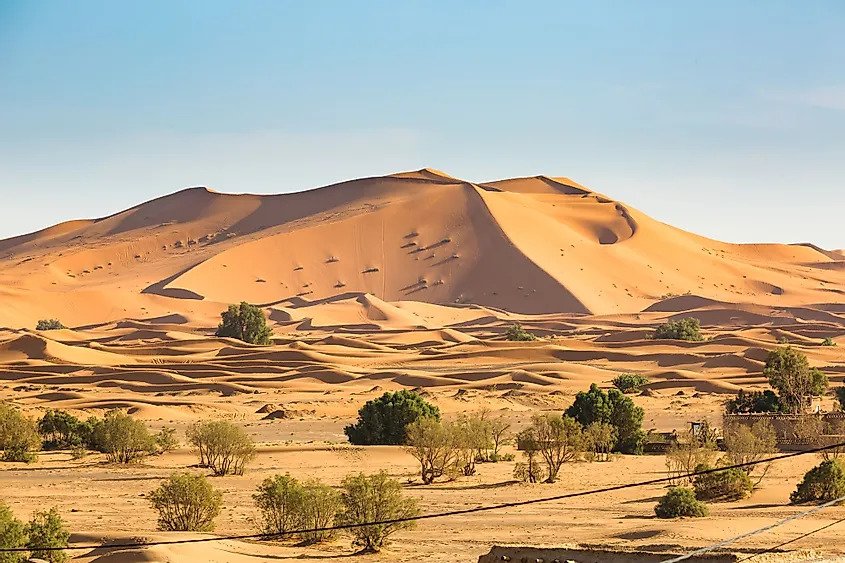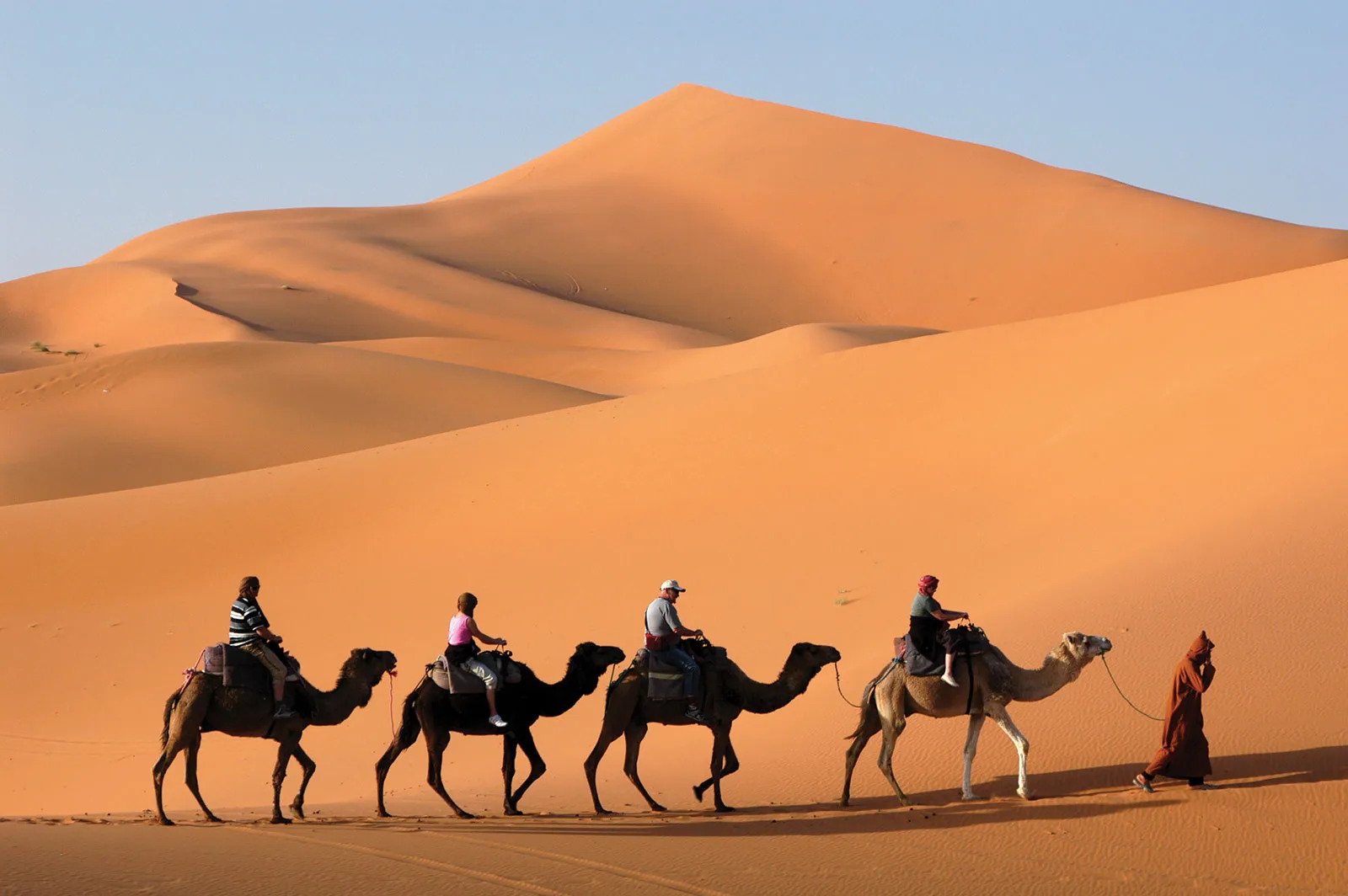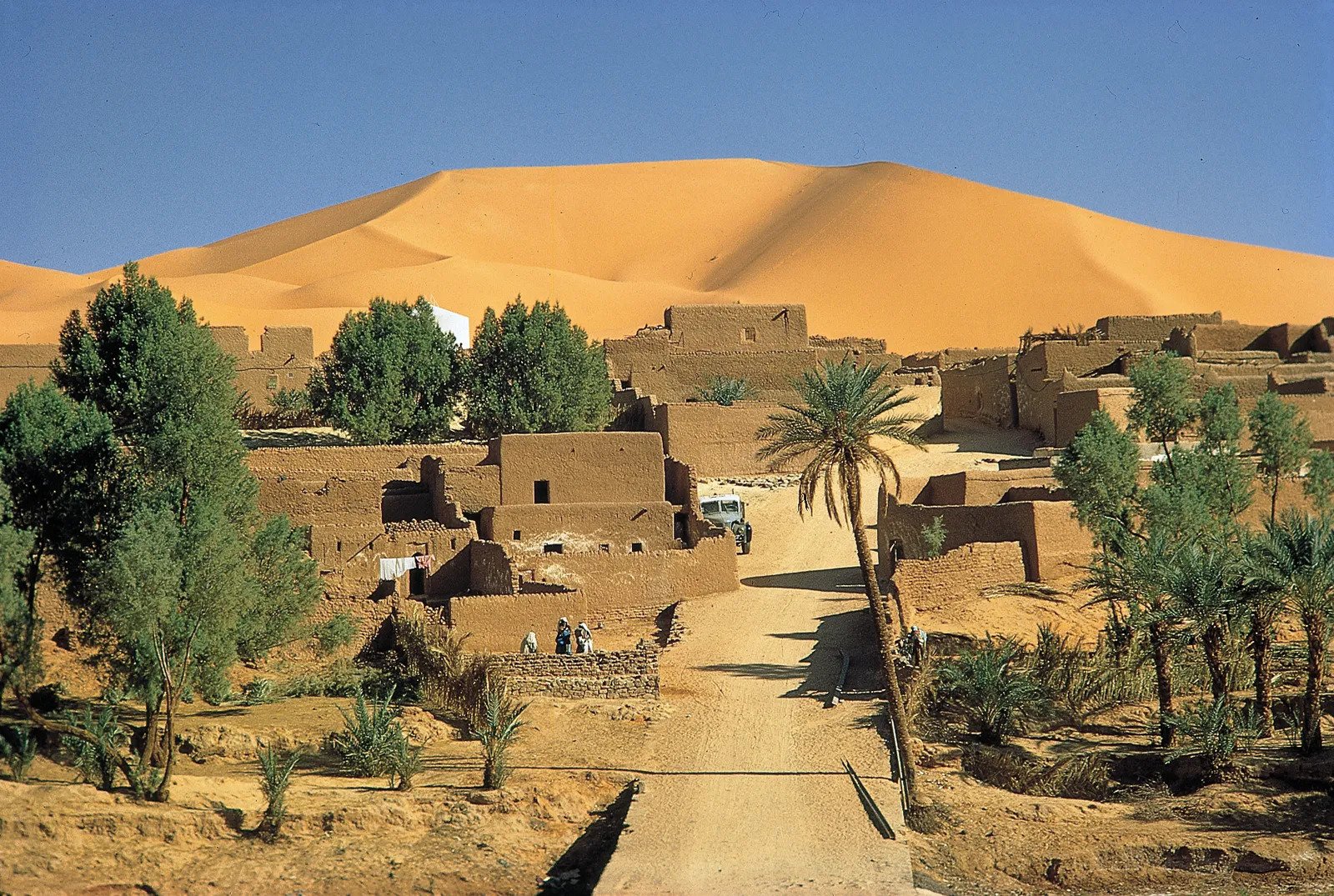Introduction
The Sahara Desert is the largest hot desert in the world, covering approximately 3.6 million square miles (9.2 million square kilometers) of Northern Africa. It is an iconic landscape of sand dunes, rocky plateaus, and windswept plains, and has been inhabited by humans for thousands of years. In this article, we will explore the geography, history, culture, and ecology of the Sahara Desert.
Geography
The Sahara Desert is located in Northern Africa and covers parts of Algeria, Chad, Egypt, Libya, Mali, Mauritania, Morocco, Niger, Sudan, and Tunisia. It is bordered by the Mediterranean Sea to the north, the Atlantic Ocean to the west, and the Red Sea and the Gulf of Aden to the east.
 The Sahara Desert is a vast expanse of arid land that is characterized by sand dunes, rocky plateaus, and wind-swept plains. It is the largest hot desert in the world, with temperatures that can reach up to 50°C (122°F) during the day and drop to near freezing at night.
The Sahara Desert is a vast expanse of arid land that is characterized by sand dunes, rocky plateaus, and wind-swept plains. It is the largest hot desert in the world, with temperatures that can reach up to 50°C (122°F) during the day and drop to near freezing at night.
Despite its harsh conditions, the Sahara Desert is home to a surprising variety of flora and fauna. It is home to several species of antelope, gazelle, and other herbivores, as well as predators such as the cheetah, leopard, and hyena. The desert is also home to a variety of reptiles, including snakes and lizards, as well as many species of birds.
History
The Sahara Desert has been inhabited by humans for thousands of years, with evidence of human habitation dating back to the Neolithic era. The desert was home to several ancient civilizations, including the Garamantes, who lived in what is now Libya, and the Tuareg people, who are still nomadic and live in the Sahara today.
The Sahara Desert has also been an important trade route throughout history, with caravans carrying goods such as salt, gold, and ivory across the desert. The Trans-Saharan trade routes connected West Africa to the Mediterranean and the Middle East, and were crucial to the development of many African empires, including the Ghana Empire, the Mali Empire, and the Songhai Empire.
Culture
The Sahara Desert is home to several distinct cultures, including the Tuareg people, who are nomadic and live in the Sahara today. The Tuareg are known for their distinctive blue clothing and their expertise in navigating the desert.
The Sahrawi people, who live in Western Sahara, are another important cultural group in the Sahara Desert. They are known for their traditional music and dance, as well as their unique cuisine, which includes dishes such as camel meat and couscous.
 The Sahara Desert is also home to several ancient cultural sites, including the rock art at Tassili n’Ajjer in Algeria, which dates back thousands of years and depicts scenes of daily life, as well as animals and hunting scenes.
The Sahara Desert is also home to several ancient cultural sites, including the rock art at Tassili n’Ajjer in Algeria, which dates back thousands of years and depicts scenes of daily life, as well as animals and hunting scenes.
Ecology
The Sahara Desert is home to a unique and fragile ecosystem that is adapted to the extreme conditions of the desert. The desert receives very little rainfall, and much of the water that is available is stored underground in aquifers.
Despite the harsh conditions, the Sahara Desert is home to a surprising variety of flora and fauna. Some of the plants that are adapted to the desert include the acacia tree, the date palm, and the cactus. These plants have evolved to conserve water and withstand the extreme temperatures of the desert.
The Sahara Desert is also home to several species of antelope, gazelle, and other herbivores, as well as predators such as the cheetah, leopard, and hyena. The desert is also home to a variety of reptiles, including snakes and lizards, as well as many species of birds.
The Sahara Desert also plays an important role in the global ecosystem, as it helps regulate the Earth’s climate by reflecting sunlight and absorbing carbon dioxide. The desert’s sand dunes and rocky plateaus also provide important habitats for many species of plants and animals.
Challenges and Conservation Efforts
Despite its ecological importance, the Sahara Desert faces many challenges, including climate change, overgrazing, and human development. Climate change is causing the desert to expand, as rising temperatures and decreased rainfall are causing desertification in many parts of Northern Africa. Overgrazing and the expansion of agriculture are also contributing to the degradation of the desert’s fragile ecosystem.
 Conservation efforts are underway to protect the Sahara Desert and its unique ecology. The Sahara Conservation Fund, for example, works to protect the desert’s wildlife and ecosystems, while the Sahara and Sahel Observatory conducts research and provides information to support sustainable development in the region.
Conservation efforts are underway to protect the Sahara Desert and its unique ecology. The Sahara Conservation Fund, for example, works to protect the desert’s wildlife and ecosystems, while the Sahara and Sahel Observatory conducts research and provides information to support sustainable development in the region.
Conclusion
The Sahara Desert is a vast and fascinating landscape that has shaped the history, culture, and ecology of Northern Africa. Despite its harsh conditions, the desert is home to a surprising variety of flora and fauna, and is an important part of the global ecosystem. As climate change and human development continue to threaten the desert’s fragile ecosystem, conservation efforts will be crucial to protect this iconic landscape for future generations.





Comments are closed.